Then is considering melodies from Heaven, making it an art of religious nature.
Then singing (Hat Then) with handmade gourd lute called “Dan Tinh” is a distinctive musical genre of the Tay, Nung and Thai ethnic groups in northern mountainous provinces of Vietnam, such as Ha Giang, Cao Bang, Bac Kan and Lang Son.
It is also practised in other localities, including Thai Nguyen, Quang Ninh, Son La, Lai Chau, Lao Cai, Bac Giang and Yen Bai in the north, and the Central Highlands province of Dak Lak.
A special combination of spiritual and cultural life
Researchers said the word “Then” originates from “Thien”, which means sky or heaven.
Therefore, Then is considering melodies from Heaven, making it an art of religious nature, a pray to Heaven to ask for bumper crops, peaceful and wealthy life.
It is believed to be handed down from the God belonging to a mysterious world to which only “Ong Then” and “Ba Then” can contact.
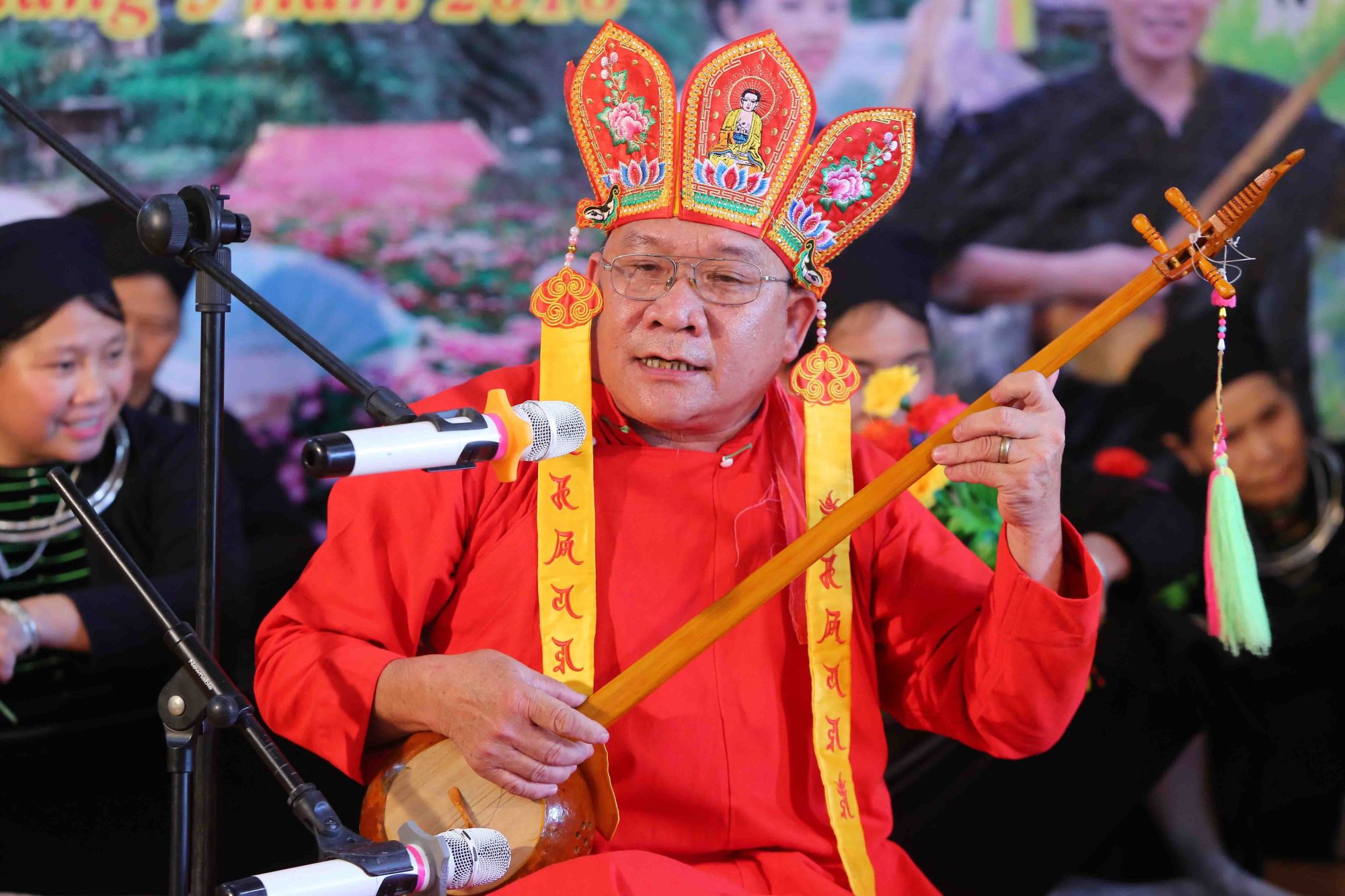
Then singing is believed to be handed down from the God belonging to a mysterious world to which only “Ong Then” and “Ba Then” can contact. (Photo: VNA)
The most important figures in a Then singing performance are “Ong Then” and “Ba Then” who can sing, dance and play a musical instrument at the same time during rituals while presenting offerings to the Gods, helping the ethnics contact with the God and ask him for good things and desires.
The art form has had an impact on local ethnic identities through its influence on literature, language, poetry, music, dance, rituals and spiritual practices.
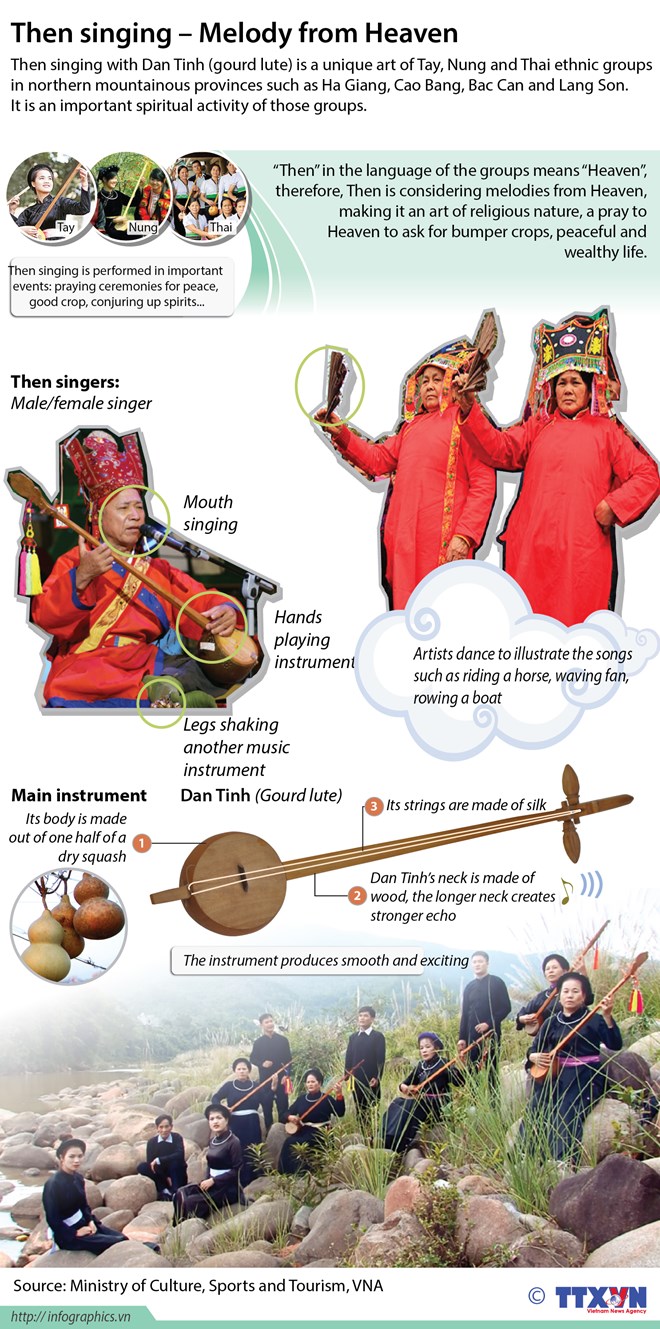
Then singing - Melody from Heaven (Infographic: VNA)
“Then singing becomes an indispensable part in the spiritual life of the ethnic groups,”said Nguyen Thi Hai Nhung, Director of the Department of Ethnic Culture under the Ministry of Culture, Sports and Tourism.
“Closely linked with the spiritual life of ethnic minority groups who often use ceremonial offerings to treat illnesses, Then singing is seen as a therapy, together with medicine, helping to ease the worries of patients and their families.”
“Then singing becomes an indispensable part in the spiritual life of the ethnic groups.”
“It is a precious cultural heritage contributing to the diverse culture of Vietnam,” she said.
Before 1991, Then singing was banned as a kind of superstition, pushing the art into the shadows, said Phung Quang Muoi from the Lao Cai provincial Department of Culture, Sports and Tourism.
Since 1993, Then singing has been gradually restored, with its real values recognised.
“At present, Tay people often organise Then singing ceremonies to drive away bad luck, pray for good crops and call back the soul of the death,” Muoi said.
Unique style of practice
There are two types of Then singing: Then Ky Yen (praying for good things) and Then Le Hoi (Then festival).
Then Ky Yen is performed at rituals.
Then Le Hoi is to bring cheer and drive away sorrow and hardships in life and is normally used in rituals to pray for good crops, enter a new home, or cap sac (coming-of-age).
As a unique combination of music and song, Then singing is traditionally accompanied by a handmade gourd lute, called “Dan Tinh” or “Tinh Tau”.

Dan Tinh’s body is made of one-half of a dry squash. Its neck is made of wood and strings are made of silk. (Photo: VNA)
Dan Tinh’s body is made of one-half of a dry squash. Its neck is made of wood, the longer neck creates stronger echo. The strings of Dan Tinh are made of silk.
“Dan Tinh” produces smooth and exciting sounds.
Then singing practitioners can be male or female singers.
They can do many acts simultaneously when they practise the art form, with mouth singing, hands playing instrument and legs shaking another music instrument.
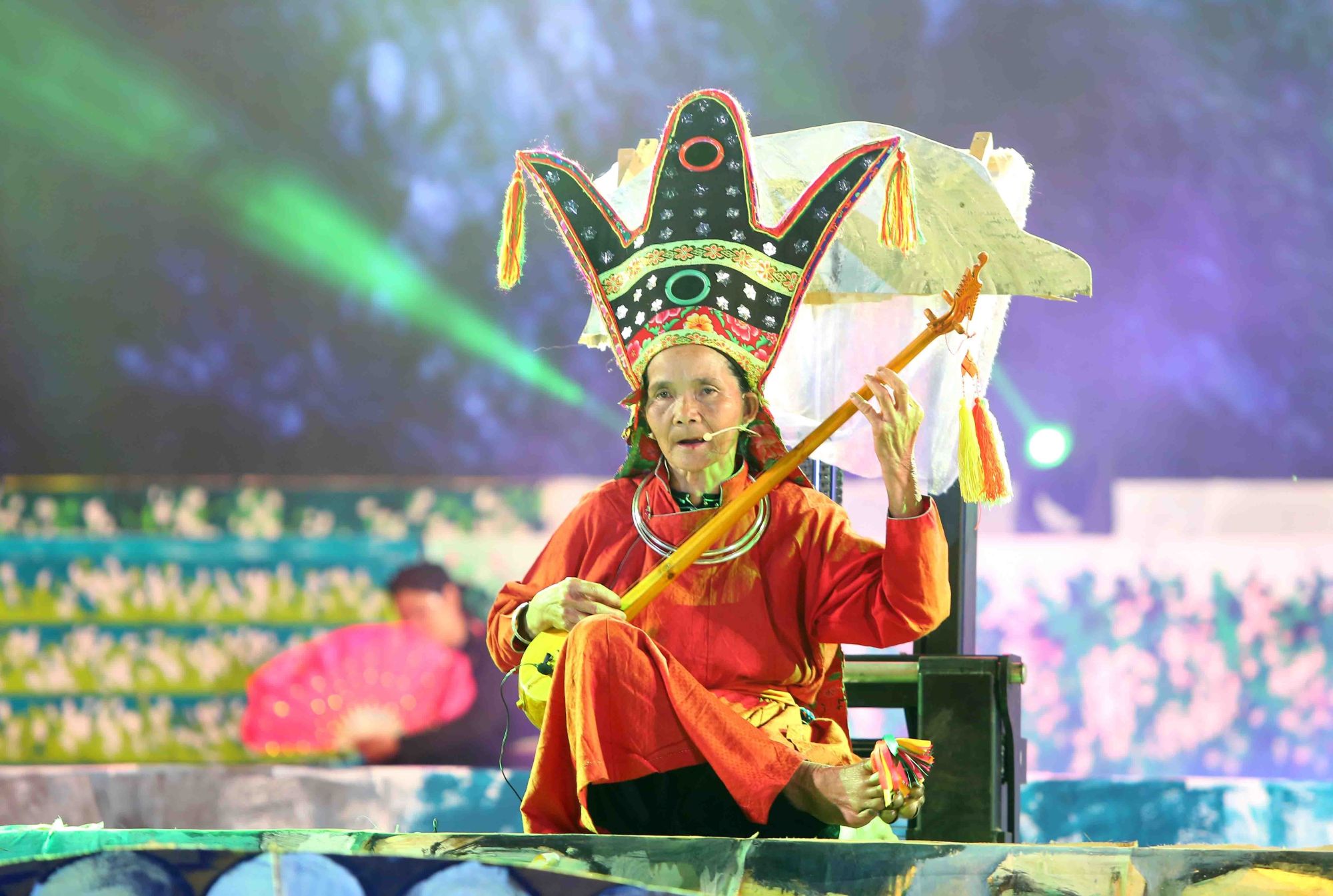
Then singing practitioners do many acts simultaneously when they practise the art form, with mouth singing, hands playing instrument and legs shaking another music instrument.(Photo: VNA)
Enthusiasts
As an orally-transmitted art form, Then would have slid into oblivion if there were no artisans with passion for ancestral tunes working to save it.
Then singing master - Meritorious Artist Ma Van Duc from Tuyen Quang city is the author of the 1,000-page book “Ancient Then in Tuyen Quang”, the only of its kind in Vietnam.
The former Vice Director of the provincial Department of Culture, Sports and Tourism is known as a “researcher” of Tay people’s culture in Tuyen Quang.
He has devoted his time and efforts to collect, study, translate, and write books on ancient Then melodies of the ethnic group over the last two decades.
He has collected all 81 old Then singing tunes with nearly 20,000 seven-lined stanzas in Tay language, which were translated into Kinh (Vietnamese) language. These were published into book in four volumes by the Vietnam Folk Arts Association.
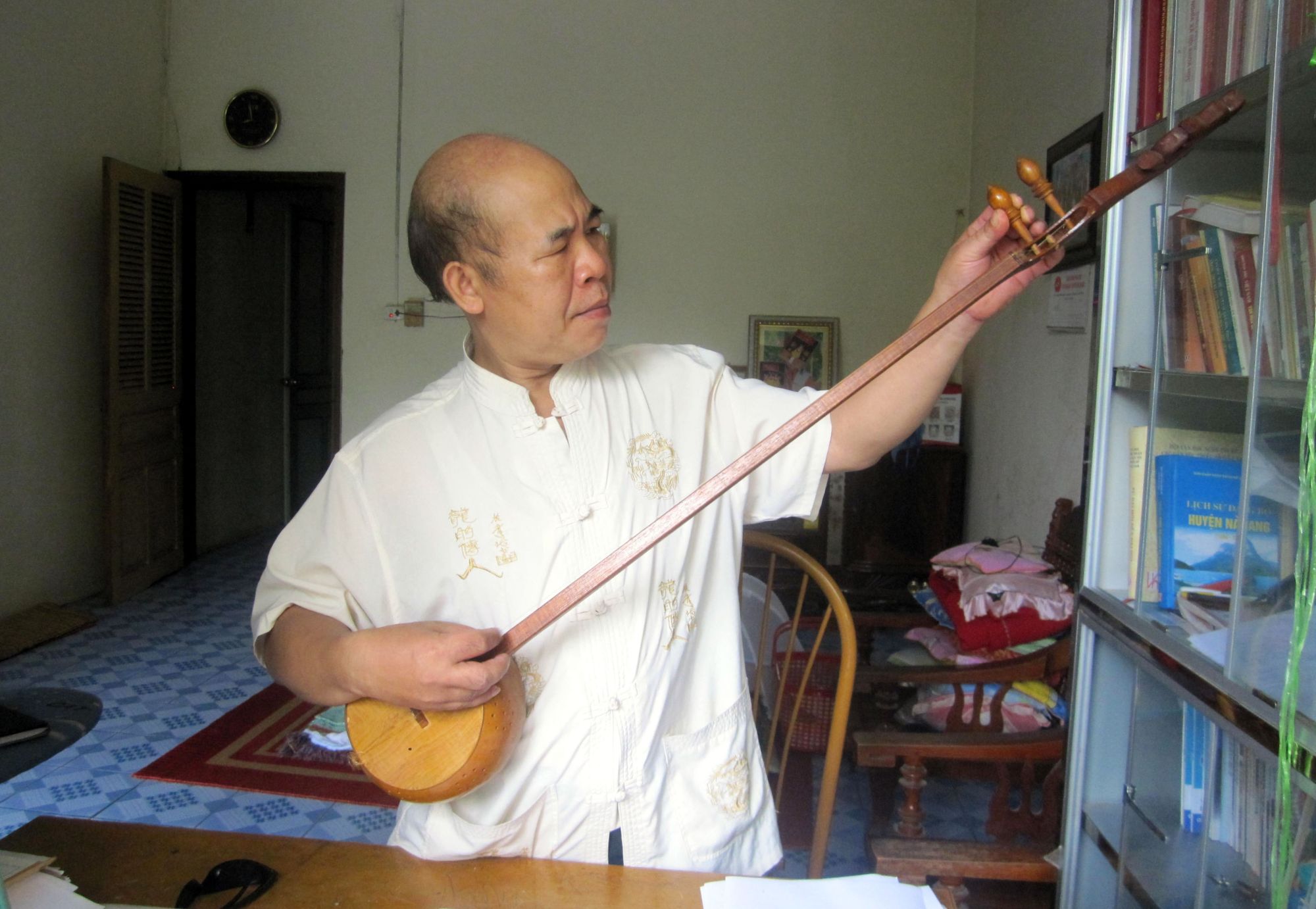
With his passion and love for the Tay culture, as well as enthusiasm and knowledge about Then singing, Duc is considered a “keeper of the soul” of Then in Tuyen Quang.(Photo:VNA)
Ma Van Duc has also completed five relevant research projects, providing basic knowledge of Then singing in the province for those who are interested in learning about.
With his passion and love for the Tay culture, as well as enthusiasm and knowledge about Then singing, Duc is considered a “keeper of the soul” of Then in Tuyen Quang.
At 18, Ha Thuan followed his father performing Then songs in neighbouring areas. He learnt to play many amazing melodies on the Dan Tinh.
The artisan is among the greatest of all the talented Then singers in Chiem Hoa district, Tuyen Quang.
Thuan has devoted himself to collecting, composing and promoting Then singing and “Dan Tinh”
He has recorded all the ancient songs he knows, reworking them to be more melodic.
He has also translated the songs from the Tay to Vietnamese so that young generations will find the lyrics easier to learn and remember.
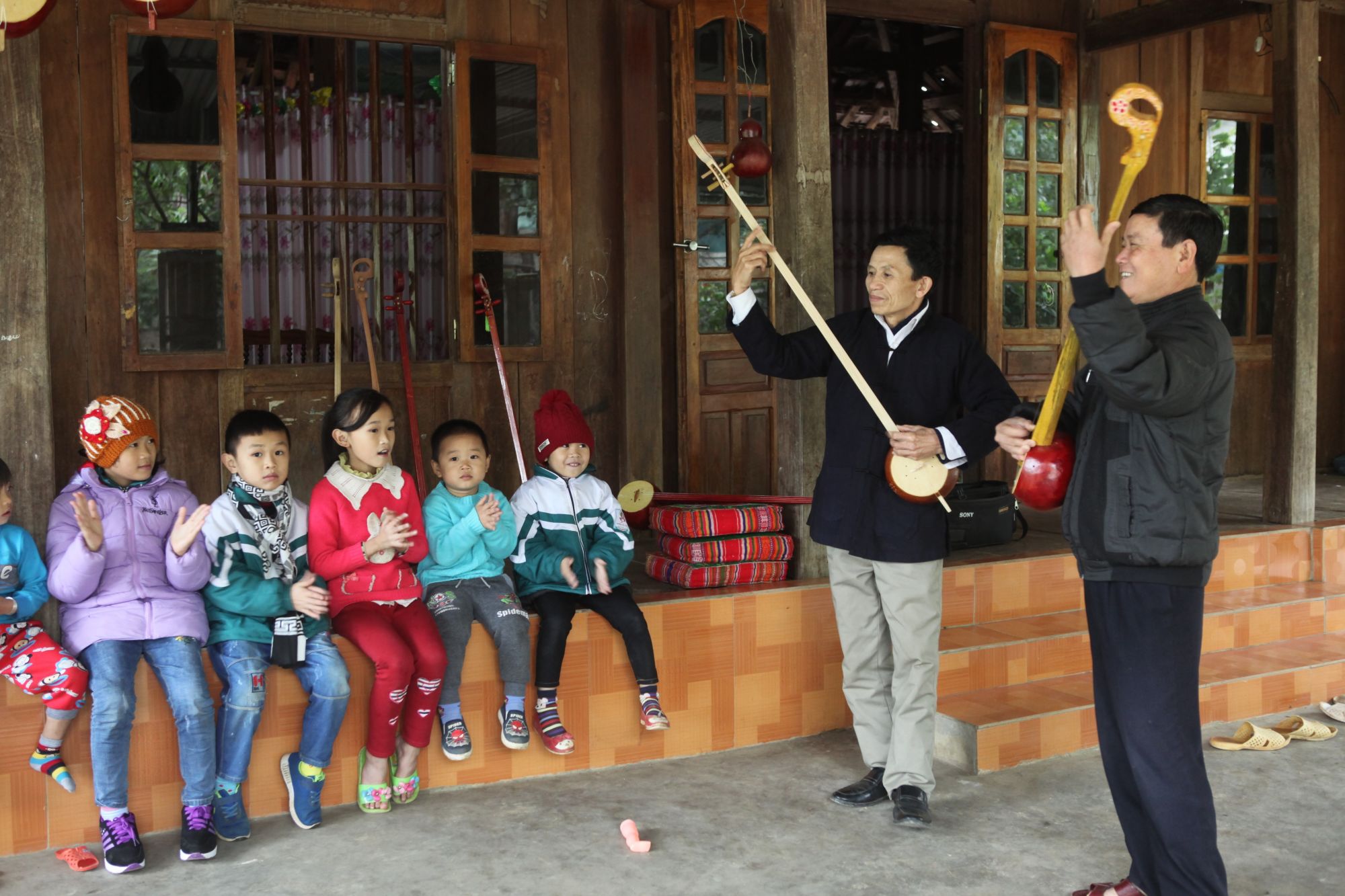
Artisans in Quynh Nhai district, Son La province play Then melodies.(Photo: VNA)
80-year-old Ma Thai Ngoc in Hung My commune shared the same passion with Thuan.
Ngoc has taught people in his village to sing Then songs and play Dan Tinh.
Then singing eminent artisan Lu Xuan Lai is a leading Then master of the Tay community in Dinh Hoa district of Thai Nguyen province.
He learnt the art from his father. Since 16, he has mastered many Then melodies used in spiritual and religious events.
With his love for the art, since 2000 Lai has taught the art to his children, while travelling to other neighbouring localities such as Bao Linh, Dinh Bien, Dong Thinh, and Lam Vy for teaching.
Lai’s students numbered hundreds and many have become key Then singers in Dinh Hoa, Phu Luong districts and Thai Nguyen city.
“The Then singing creates a great vitality in the spiritual life of Tay, Nung and Thai people. The style of singing is a pride of the ethnic people.”
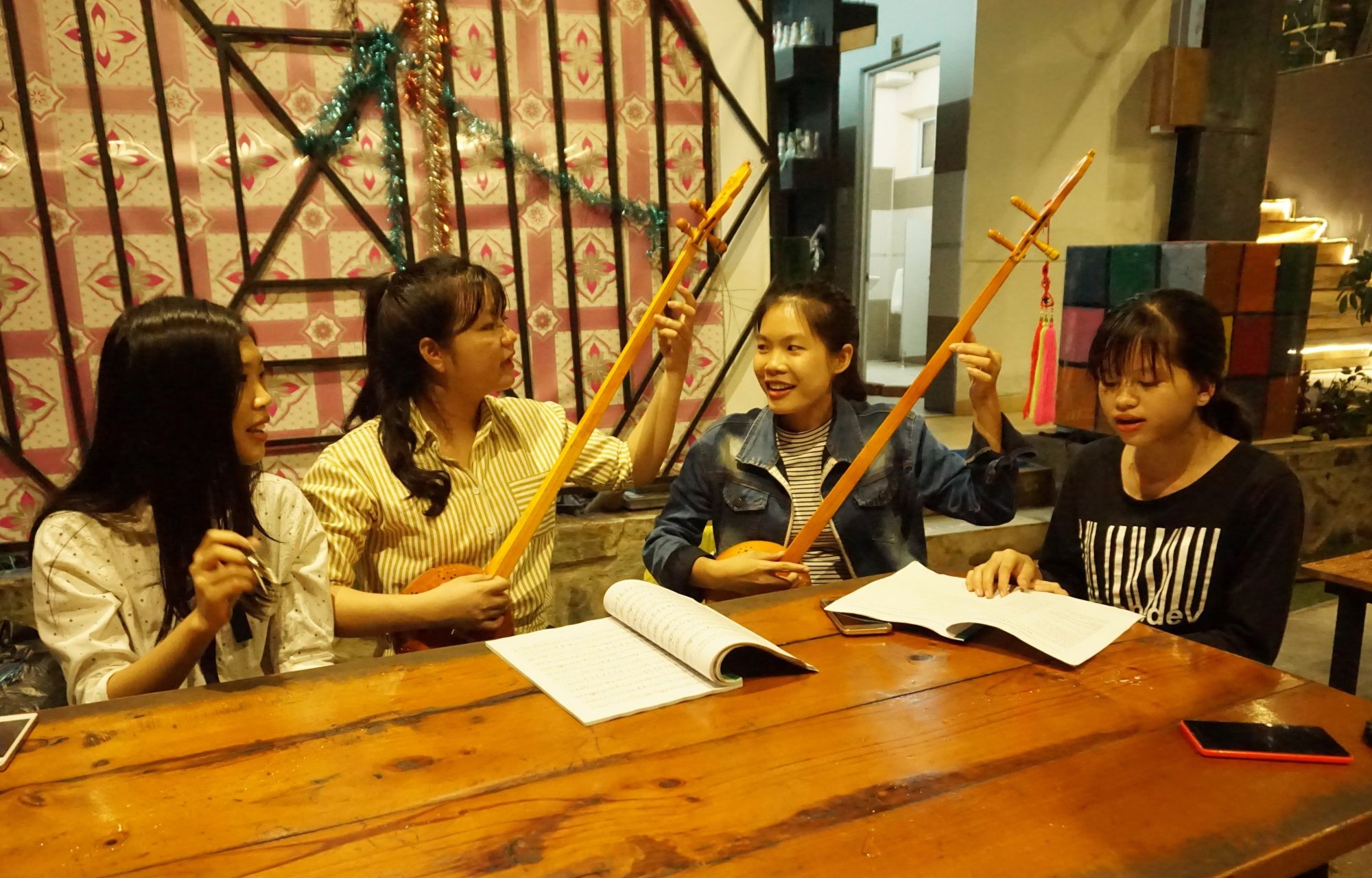
Young people practices Then singing together (Photo: VNA)
Preserving the art – tireless efforts from “Then” cradles
At a time when Then singing artists are getting older and not many young people show their love for the tradition, it is necessary to diversify methods to preserve the singing, said writer Hoang Trieu An, who has been researching Then singing.
“Apart from collection and restoration of traditional Then songs, relevant agencies should pay special attention to Then singing artists, who can impart both Then singing skills and their passion for the art to younger generations,” he said.
Many have suggested the establishment of Then singing clubs and including the art form to the school curriculum, as well as promoting the art genre on mass media.
Over recent years, Tuyen Quang province - one of the cradles of Then singing, has devised a number of measures to protect and uphold the value of Then singing.
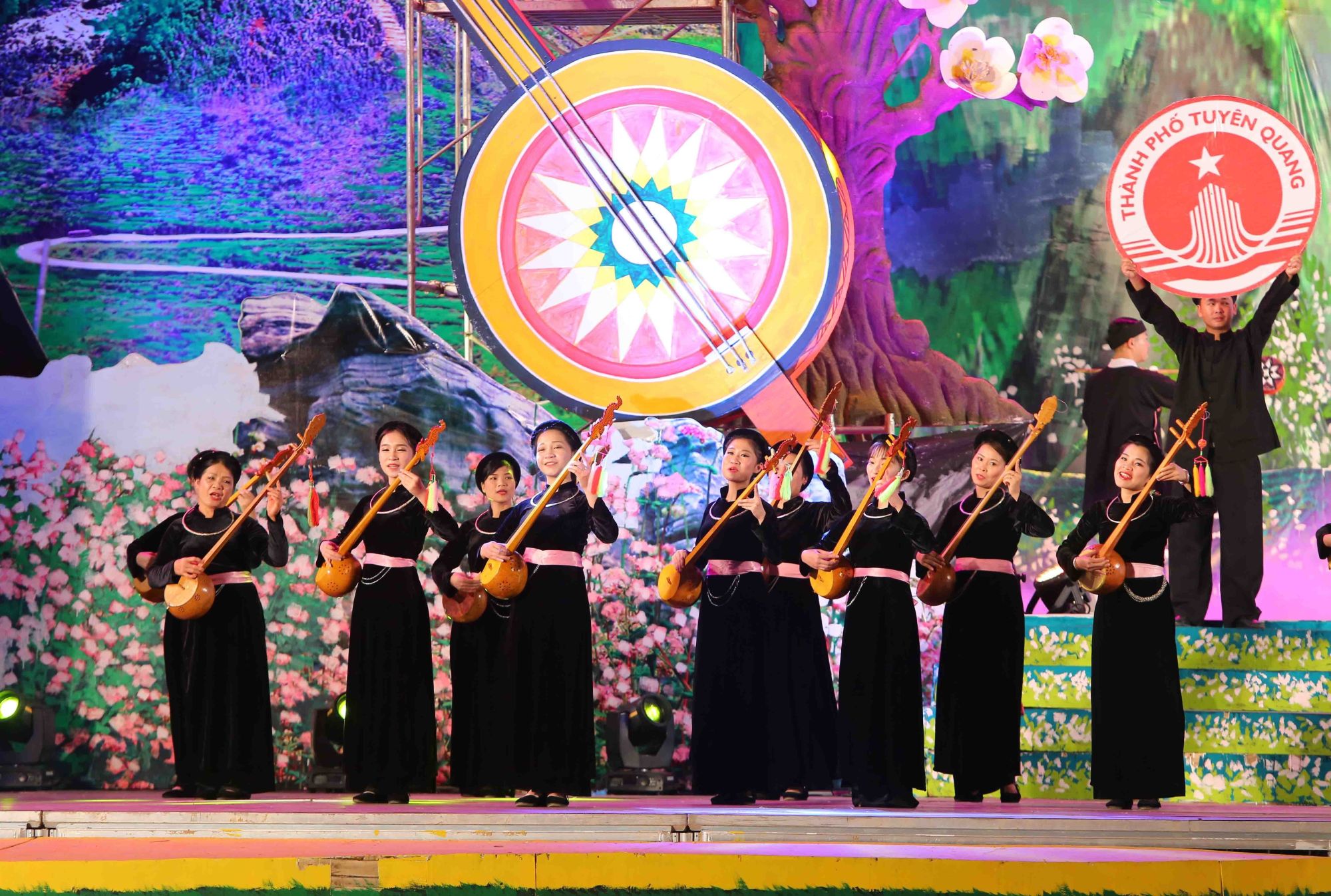
An art troupe from Tuyen Quang province performs Then tunes at the Then Singing Festival 2018. (Photo: VNA)
The local cultural sector has compiled a list of artisans, conducted training classes and compiled and published books of Then lyrics to be introduced at schools, said acting Director of the provincial Department of Culture, Sports and Tourism Nguyen Vu Phan.
Local artisans have been encouraged to collect and write down lyrics of ancient ritual Then songs, while performances of ancient Then singing have also been promoted in community-based festivals across the locality including the ethnic Tay “Long Tong” (field work) festival.
“A cultural-tourism village attached with conserving Then singing was formed in Tuyen Quang in a bid to preserve the art genre,” he said.
Additionally, the provincial authority has also carried out a scientific research project, which collects ancient songs and teaches young people to sing the songs.
Over 60 Then singing clubs have been established in Tuyen Quang with nearly 1,500 people practising the traditional art.
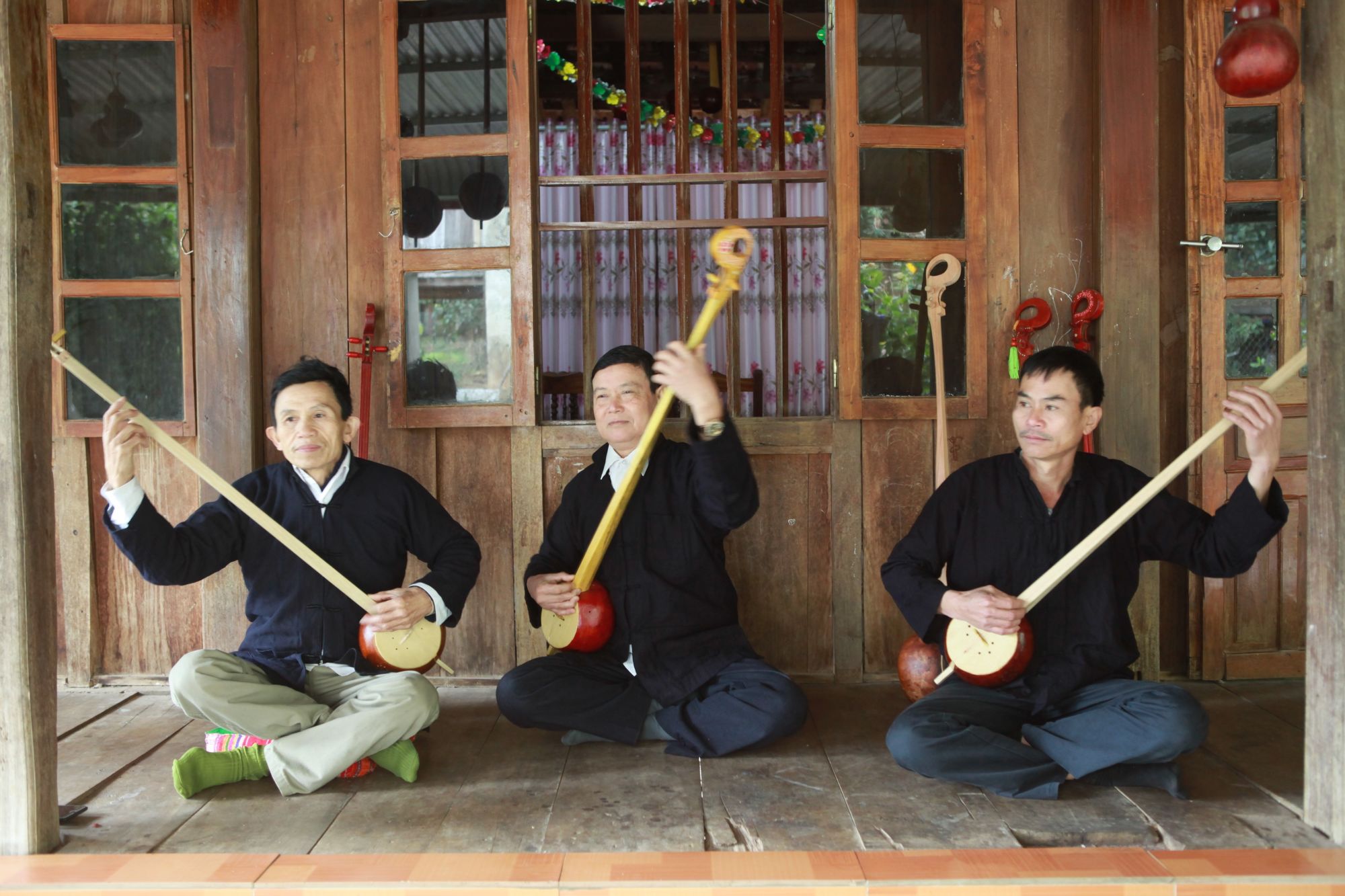
Experts suggested creating more “playgrounds” for Then singers, thus popularising the art among community in a sustainable manner, especially among younger generations. (Photo: VNA)
Experts suggested creating more “playgrounds” for Then singers, thus popularising the art among community in a sustainable manner, especially among younger generations.
Pham Thai Hanh, Director of the Thai Nguyen provincial Department of Culture, Sports and Tourism said that Then singing practices have been revived in many festivals and events, while Then singing clubs have been set up in localities with large number of Tay and Nung people.
The collection and protecting of folk Then melodies have been implemented with the recording of 15 melodies and gourd lute playing techniques of 15 artisans in the province.
“Masters of Then have also been honoured,” Hanh added.
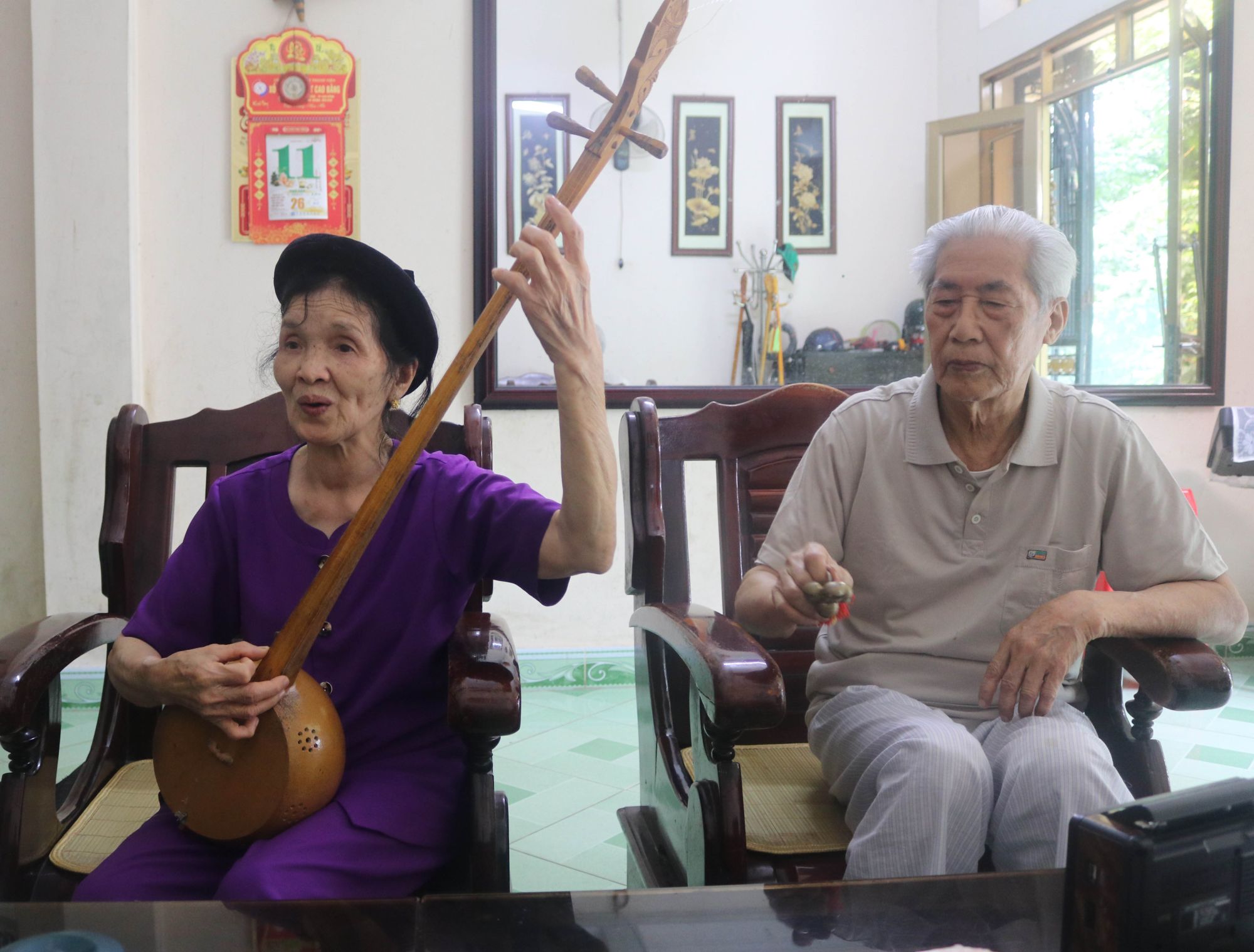
Meritorious artist Quynh Nha (L) - a Tay people in Cao Bang province’s Quang Ha district, has conquered many generations of lovers of music, especially those interested in folk music, during 36 years of her singer career. She won many prizes in Then singing festivals. (Photo: VNA)
Currently, Then singing has become a typical folk art of Thai Nguyen with high historical, artistic and scientific values.
In Dinh Hoa district alone, 18 Then singing clubs have been formed in 24 communes and towns, drawing about 200 singers and 500 trainees.
The local authority is working hard to support those who exerting efforts in keeping the art, and invest more in publishing Then song collections to maintain the art among generations and ethnic communities in the province.
Lang Son province is now home to 65 Then singing clubs with around 1,400 members.
Hoang Thi Thuy, member of Noc Kham Khac club in Na Sam town, Van Lang district, said that after nearly 5 years, her club now has 26 members who love Then singing and Dan Tinh at all age groups, from 10 to 78 years old.
Head of the provincial traditional singing and musical instrument club Trieu Thuy Tien said to preserve and promote the value of this genre of singing, Tien stressed the need to maintain Tay and Nung languages in Then songs.
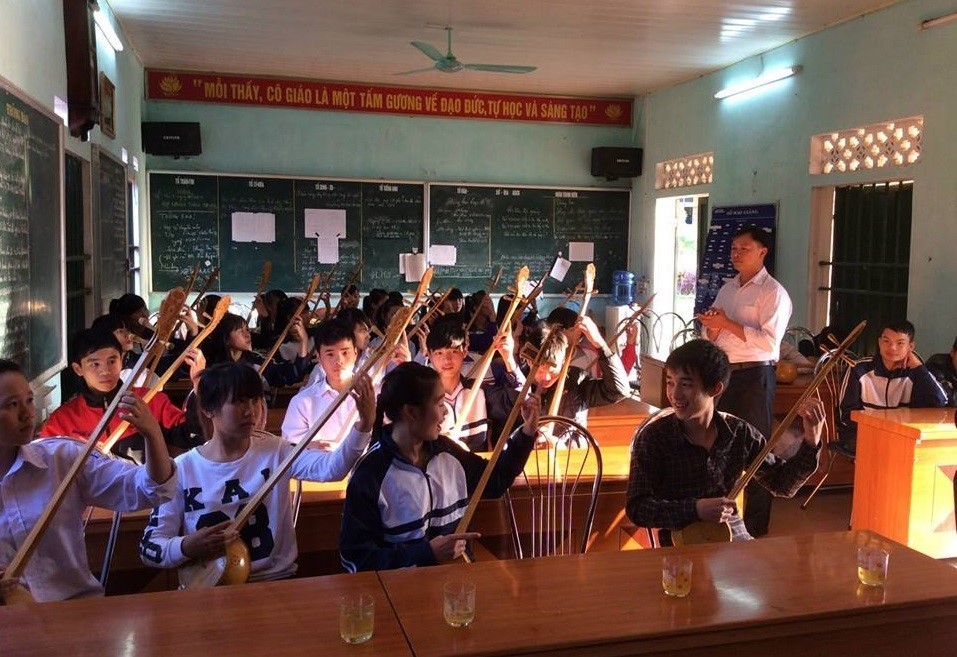
Then singing has been taught at the Luong Van Tri high school in Van Quan district, Lang Son province for years. The school has so far organised 16 classes of Then singing with nearly 300 students; The classes were equipped with 28 gourd lute, and 15 costumes and other instruments to serve the teaching and performance.(Photo: VNA)
National festival looks towards UNESCO recognition
The folk Then singing was added to the official list of national intangible cultural heritages in 2012.
Every three years, the National Festival of Traditional Then singing is organised as part of activities to honour, preserve and develop this traditional art form.
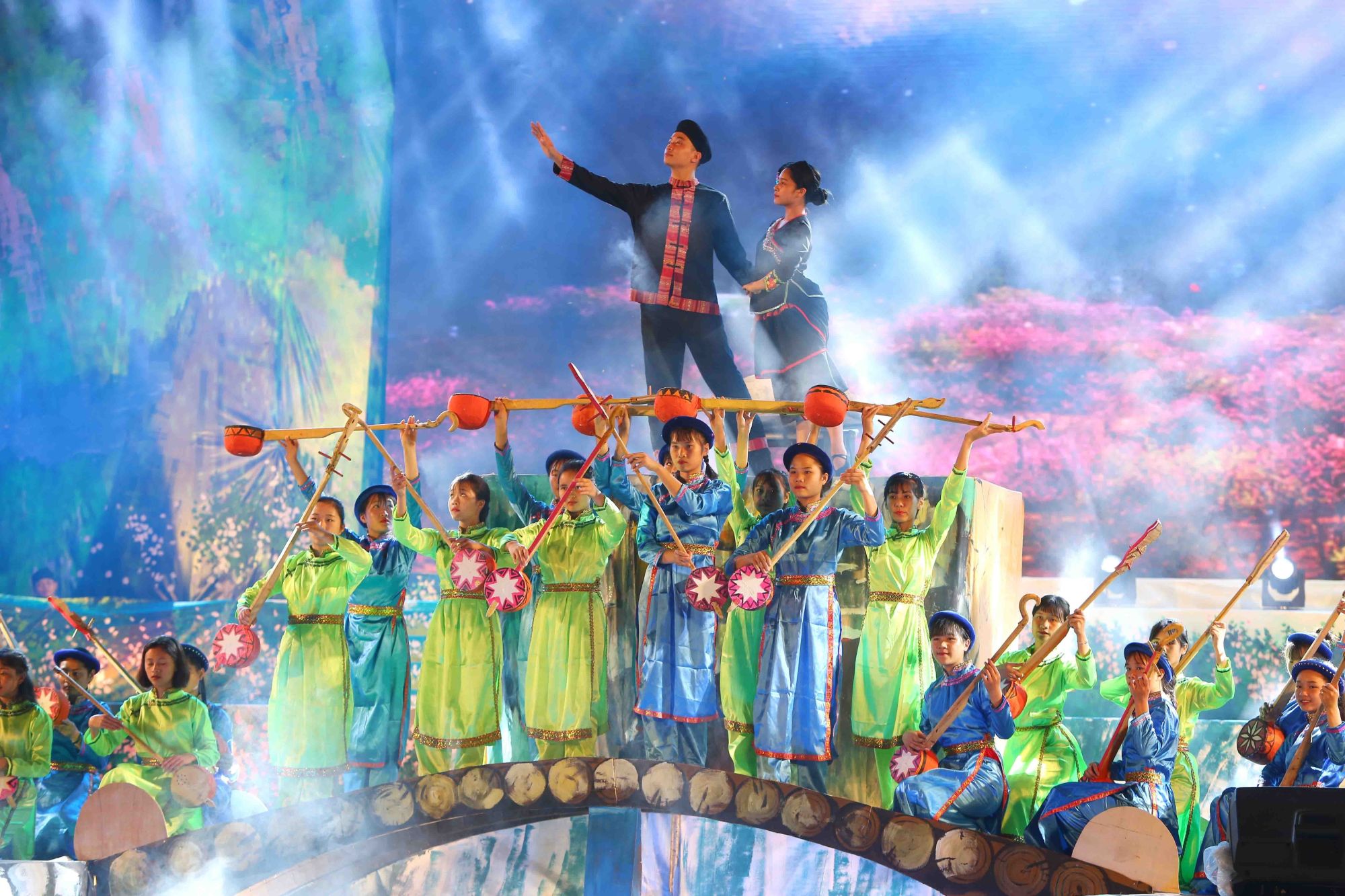
The opening ceremony of the Then Singing Festival 2018 in Ha Giang province (Photo: VNA)
The sixth edition of the event and the latest took place from May 12-14, 2018 in Ha Giang province, gathering 500 artisans from the 14 provinces nationwide.
Localities with the signature music have been working together to seek UNESCO recognition for Then singing as a piece of the Intangible Cultural Heritage of Humanity.
They, together with the Tay, Nung and Thai ethnic communities, the People’s Committees, their Departments of Culture, Sports and Tourism, and Departments of Cultural Heritage have joined hands with the Vietnam National Academy of Music to compile a dossier asking for the title.
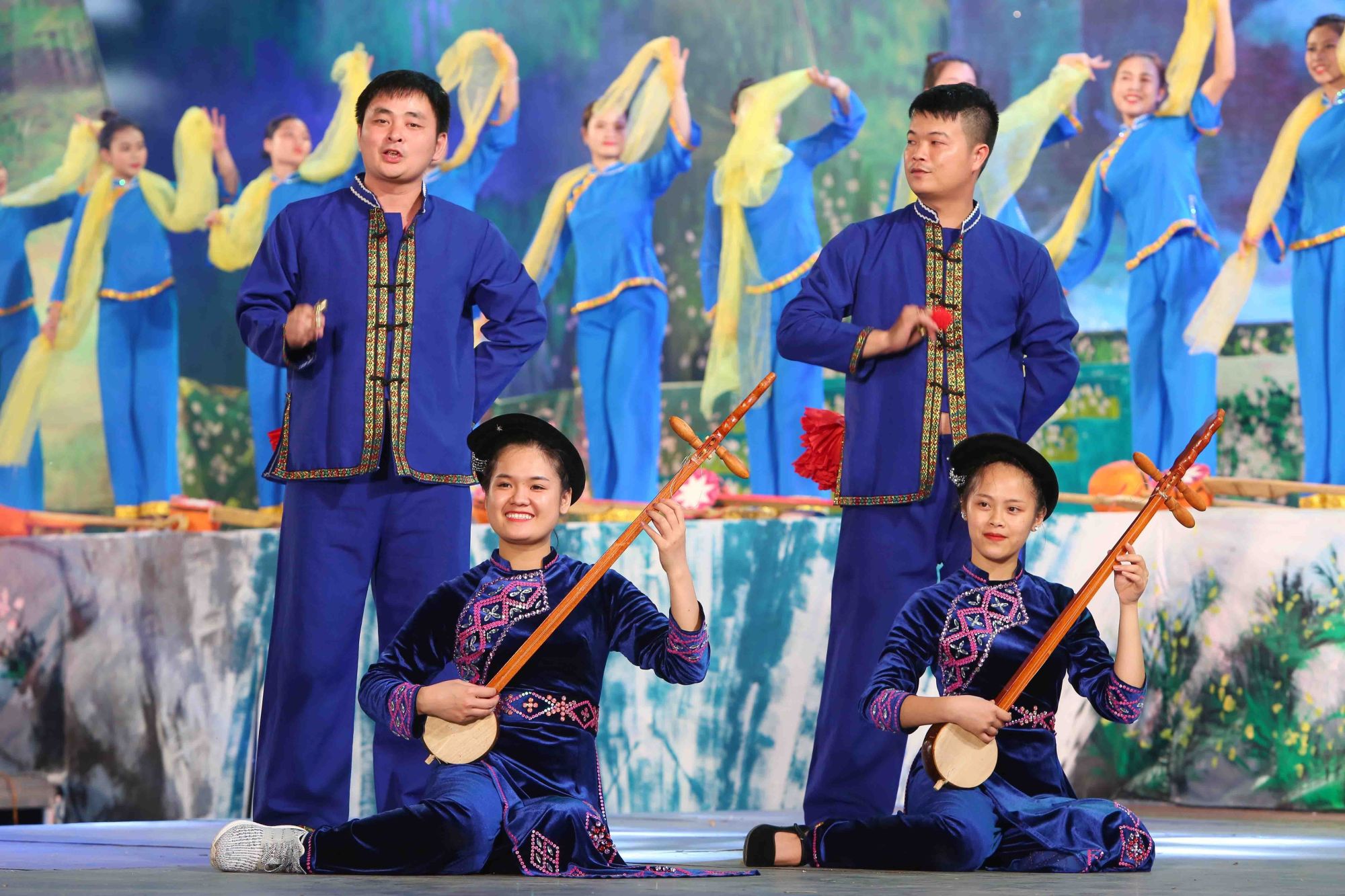
A Then singing performance at the festival (Photo: VNA)
The dossier was submitted to UNESCO in late 2017.
“The Then singing creates a great vitality in the spiritual life of Tay, Nung and Thai people,” said writer Hoang Trieu An who has spent a lot of time researching Then singing.
“The style of singing is a pride of the ethnic people.”
Vietnam has so far had seven examples of world intangible heritage listed by UNESCO: Hue’s royal court music; Gong space culture in the Central Highlands; Quan ho (love duet) singing; the Giong festival; Ca Tru ceremonial singing; Xoan singing; and the Worship of the Hung Kings.